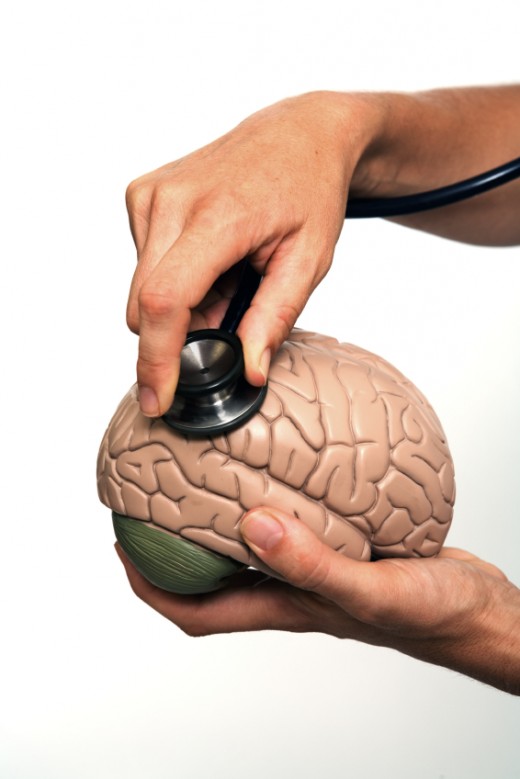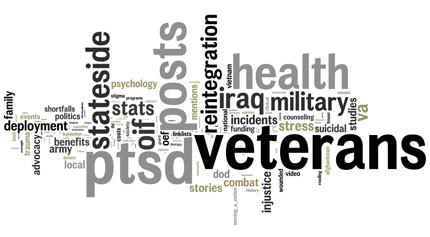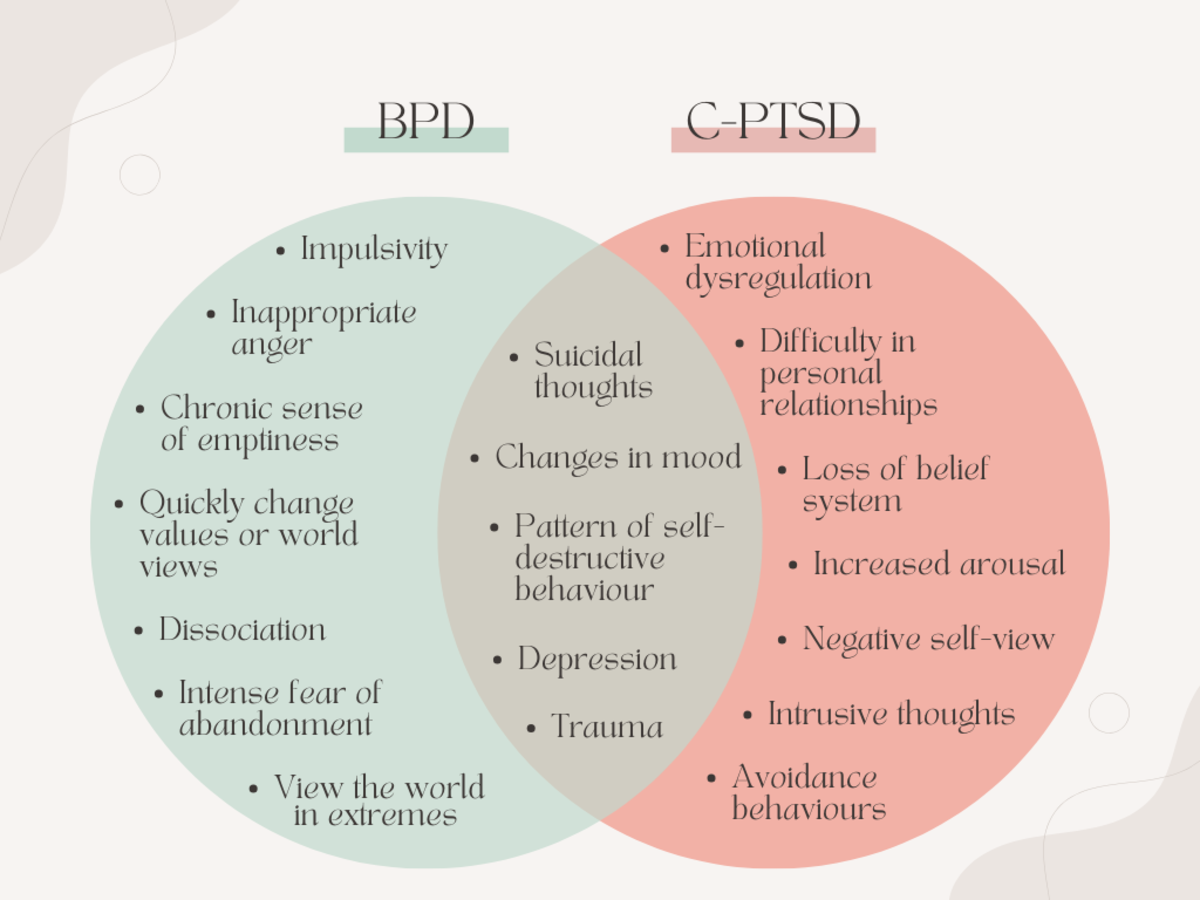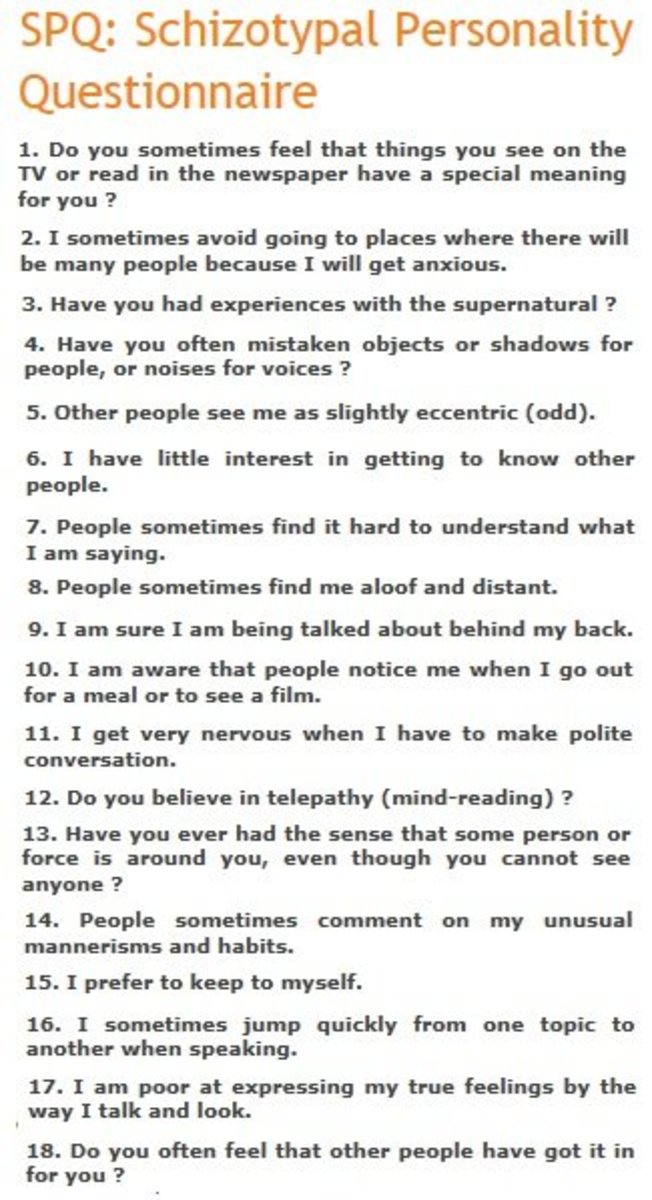Psychological Disorders Simplified
There are a great many psychological disorders. For an in-depth study of all psychological disorders, the Diagnostic and Statistical Manual of Mental Disorders is an excellent resource. This article will describe briefly many commonly and not-so-commonly diagnosed disorders, including schizophrenia, bipolar disorder, personality disorders, post-traumatic stress disorder, generalized anxiety disorder, anorexia nervosa, and more.
Psychological disorders fall on a continuum of mild to moderate to severe to psychotic. No two people with a psychological disorder will behave exactly the same, just like no two people who are mentally healthy behave exactly the same.

Schizophrenia
People who suffer from schizophrenia may have a wide array of symptoms. To be diagnosed, symptoms have to be present most of the time during a month period and symptoms must be ongoing for 6 months. Listed below are 4 different subtypes of schizophrenia and some of the symptoms that may be observed in each.
Paranoid: guarded, mistrustful, delusions of persecution (e.g. believing the CIA is after them; believing their family wants to kill them), ominous hallucinations (e.g. the person hears God telling them they are being punished for misdeeds)
Catatonic: stuporous, waxy flexibility (def: when moved, the person’s body stays in position until moved again by someone), negativism (def: resisting attempts to have the person do something), automatic obedience (def: like the game, “Simon Says,” the person does exactly what they are told with precision), psychomotor retardation (def: very slowed body movements)
Disorganized: often earlier onset of illness with regressive behavior (childish), flattened or bizarre affect, incongruent giggling, strange mannerisms, poor attention to personal hygiene, low sociability
Residual: failure to completely return to baseline behavior with some diminished symptoms of acute illness remaining, such as odd and/or eccentric mannerisms, poor hygiene, low sociability, less intrusive hallucinations and delusions
*Note: The DSM-V has omitted the subtypes of schizophrenia; however, in practice you will see people who tend to fall into these categories.
Schizophreniform Disorder
This disorder looks just like schizophrenia, except it does not last for 6 full months. If symptoms last for 6 months or longer, the diagnosis should change to schizophrenia.
Bipolar Disorder (a.k.a. manic-depression)
People who suffer from bipolar disorder have periods of normal mood, depressed mood, hypomania, and/or mania. It is commonly believed that people who have bipolar disorder are always in a manic or depressed state, when in fact, it is usually the opposite. Most of the time, people with bipolar disorder are in a normal mood state (euthymia). Bipolar is a chronic illness, meaning it cannot be cured.
Some of the symptoms of mania include:
- Elated mood
- Irritability
- Excessive spending
- Gambling
- Impulsive behaviors (e.g. driving fast, using drugs, having unsafe sex practices)
- Increased libido
- Decreased sleep drive
- Decreased appetite or forgetting to eat
- High distractibility
- Flight of ideas (def: jumping from topic to topic with clear connections)
- Loose associations (def: connecting topics that do not seem connectable)
- Pressured speech
- Grandiose delusions (e.g. believing they are invincible against oncoming traffic)
Hypomania is a step below mania. The person often is still able to function in work and social settings when in a hypomanic state, but their behavior is obviously different.
Read my article on bipolar disorder for more information.
Major Depressive Disorder
Major depressive disorder affects many people and can be completely debilitating. Often people have a poor understanding of why their loved one no longer seems to enjoy life or living. Symptoms of major depression are very real and very treatable. They include:
- Suicidality
- Anhedonia (def: lack of enjoyment in life)
- Increased or decreased sleep
- Low libido
- Increased or decreased appetite
- Increased sighing
- Anergia (def: lack of energy)
- Avolition (def: lack of motivation)
- Delusions of persecution
- Somatic complaints (def: body issues, including pain)
- Chronic pain
- Low self-esteem and confidence
- Irritability
- Poor self-concept
For a diagnosis of major depression to be made, a person must have several symptoms for 2 weeks continuously. Suicide is a huge risk in major depressive disorder. Any thoughts or threats of suicide must be taken seriously.
Dysthymic Disorder
Dysthymic disorder encompasses some of the same symptoms of major depressive disorder, yet it is ongoing for 2 years or longer. People who have not known a person with dysthymic disorder for very long may believe it is simply his/her personality because of the consistent mood state. There is chronic anhedonia (def: lack of enjoyment in life) and low self-esteem. Suicidality may be present as well, and if so, must be treated.
Personality Disorders
Personality disorders are different than the other disorders listed thus far. They do not go through periods of remission. Once a personality disorder is present, it is always present. Personality disorders have an onset in late adolescence/early adulthood. Symptoms are a variety of personality traits that deviate markedly from the person’s culture. Read my article on personality disorders for more information.
Post-Traumatic Stress Disorder
People who experience a near-death event or watch others be involved in a fatal or near-fatal event may experience symptoms of post-traumatic stress disorder. Symptoms of post-traumatic stress disorder include:
- Hypervigilance (def: be on high alert all the time)
- Flashbacks (def: reliving the experience in the mind) and nightmares
- Emotional detachment from people or things associated with the event
- Exaggerated startle response (def: easily spooked, jumpy)
- Avoidance of things associated with the event
- Feeling numb
- Difficulty concentrating
- Anger and/or irritability
- Difficulty sleeping
- Guilt and/or shame
- Hopelessness
- Hallucinations
These symptoms, if untreated, may last a lifetime. Post-traumatic stress disorder can be present in children and adults. Events that often cause post-traumatic stress disorder include:
- Involvement in combat (e.g. many veterans suffer from post-traumatic stress disorder)
- Domestic abuse
- Childhood abuse
- Car accidents
- Natural disasters
- Bombings or other attacks (e.g. 9-11)

Generalized Anxiety Disorder
Generalized anxiety disorder sufferers may be called “worry warts” by those who know them. It seems they always have something to be worried about. Symptoms last for 6 months or longer and are not related to any one specific thing. They include:
- Constant worry about small things
- Obsessing
- Irritability
- Difficulty sleeping
- Muscle tension
- Fatigue
- Shortness of breath
- Difficulty concentrating
- Being jumpy
Often, people who suffer from generalized anxiety disorder may try to self-medicate with alcohol or other depressing drugs to decrease their symptoms. This type of self-medication is quite dangerous as it can lead to additional problems.
Anorexia Nervosa
Anorexia nervosa is most often diagnosed in young women and adolescents. People with anorexia nervosa have a pathological fear of being overweight and go to great lengths to become extremely underweight. A person must refuse to maintain body weight at or above 85% of their medically ideal body weight to have this diagnosis. Females with anorexia nervosa may stop menstruating from severe malnutrition. Other clinical symptoms include:
- Lanugo (def: fine, downy body hair)
- Brittle hair
- Emaciation
- Yellow skin
- Brittle nails
- Low blood pressure
- Low heart rate
- Electrolyte imbalances (these can be quite dangerous)
- Heart failure
- Muscle weakness and atrophy
- Pale skin tone
- Dark circles under the eyes
- Cool extremities
- Obsession with food and odd handling of food (e.g. cutting food into many small bites, weighing all food in and all waste out)
When people who have been in a state of starvation begin eating again, there also are some risks. The body cannot tolerate the rapid change, and the heart may have difficulty pumping. People who suffer from anorexia nervosa should be carefully monitored during this process.
This is just a brief introduction to some different psychological disorders. There are many more disorders, some not so common. It is important for people who suffer from psychological disorders to get treatment for their illness, just as it is important for people who are medically ill to get medical treatment. Psychological disorders are more common than many people realize and with continued effort, we can help people fight these illnesses and hopefully, someday develop cures or preventative measures for them.

© 2013 Leah Wells-Marshburn








